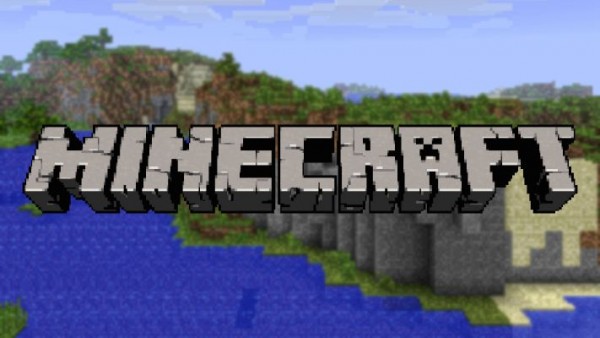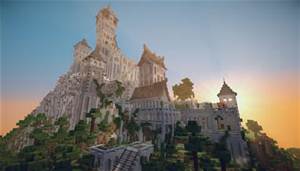Disclosure of Material Connection: This is a "sponsored post." The company who sponsored it compensated me via a cash payment, gift, or something else of value to write it. Regardless, I only recommend products or services I use personally and believe will be good for my readers. I am disclosing this in accordance with the Federal Trade Commission's 16 CFR, Part 255: "Guides Concerning the Use of Endorsements and Testimonials in Advertising."
I have always been an advocate of using games to education and stimulate the minds of others whether they are young or old. I think things like good hand eye coordination, paying attention to details, and multi-tasking all came natural to me from playing games on consoles and computers as I was a kid. Check out the information below and leave some comments on what you think about this great idea! ~Tom
At more than 50 million downloads and over 100 million registered users, it’s the most popular video game of all time. With a version available for just about every platform imaginable, the 3-dimensional building block game known as Minecraft is ubiquitous in the world of online gaming, said Paul Louden, autism advocate and host of the Theories of Mind radio program that runs on 1110 AM KTEK Bloomberg Business Radio. So when Microsoft purchased the game’s developer, and thus the Minecraft franchise, for $2.5 billion last year, many observers in the tech community were left scratching their heads as to why the mammoth tech company was so hot and heavy to own the rights to a game that had already reached the saturation point.
Louden said that over the last 12 months, the answer has become clearer. He said that in the short run Microsoft is pairing the hugely successful game with its new Windows 10 operating system, which is a boon in its quest for more and younger users. In the longer term, he said, Microsoft has a vision. “They see the enormous value of Minecraft, not just for what it is now, but for its future potential. The popularity of game-based learning is blowing up, and it’s opening new frontiers in the way we work, the way we learn and the way we create. The outlook is amazing for kids who have autism and other neurological disorders.”
Louden said many young people who have been diagnosed with Autism Spectrum Disorder (ASD) share an affinity for technology and gaming. He said Minecraft is a runaway favorite among higher functioning ASD kids because it offers open-ended possibilities within a virtual environment that they control. Louden said parents have even joined together to set up player-hosted servers that ensure a “pro-social, non-bullying” environment for gaming. One private server, AutCraft, is designed specifically for kids on the autism spectrum and has attracted thousands of registered users.
Louden said that in its current form, Minecraft has already proved to be an asset to parents and therapists as they work to help ASD kids bridge the gap between themselves and the neurotypical world. “At its most basic, Minecraft is a construction game where you’re building cities and worlds, above and below ground. But in the process, kids are also learning to classify objects, complete complex tasks, follow multi-step directions, and work toward a goal” he said. “They get so into the game that they seek out additional resources through YouTube, Wikipedia and other references to find information that will help them,” said Louden. “These are some of the very skills that ASD kids need to hone in order to function more independently in everyday life. When you hear the parents of these children describe the elaborate conversations they are having with their autistic child about what they’re doing in the game, conversations in which their child is retelling his adventures spontaneously, it’s almost jaw-dropping. There are also strides being made in helping these kids to work cooperatively and to achieve a common goal. I can tell you that some of these learning objectives are amazingly difficult to achieve for those with autism.”
Looking ahead, Louden said that user-generated game modifications, or “Mods,” are the means by which the game will continue to evolve. Already, independent educational projects such as MinecraftEdu are serving as cooperative clearing houses and meeting places for ideas to be shared among teachers in many general education subject areas. Microsoft is assembling its own official “Minecraft in Education” portal to follow suit. Louden says these “communities of practice” are also springing up spontaneously among parents and specialists who work with ASD children as they search for ways to adapt the game to the needs of those with autism.
“Anything that boosts the confidence of these kids, that allows them to be the experts, the masters of their own environment, is a path that we should explore,” said Louden. “The “gamification” of these life skills is bringing about a new class of interaction between those with autism and the neurotypical world. It’s a bridge we need to continue to build.”
For more on Paul Louden and his work to increase autism awareness and understanding: Visit www.theoriesofmindradio.com. Listen to “Theories of Mind” radio with Paul Louden, Tuesdays from 10 to 11 a.m. on Bloomberg Business Radio 1110 KTEK-AM in Houston, to learn more about mental health challenges in the news today and how differences shape our lives.
So what do you think? Do you have thoughts on how this can benefit someone that you know? or a friend?
Discover more from Tom's Take On Things
Subscribe to get the latest posts sent to your email.


Leave a Reply